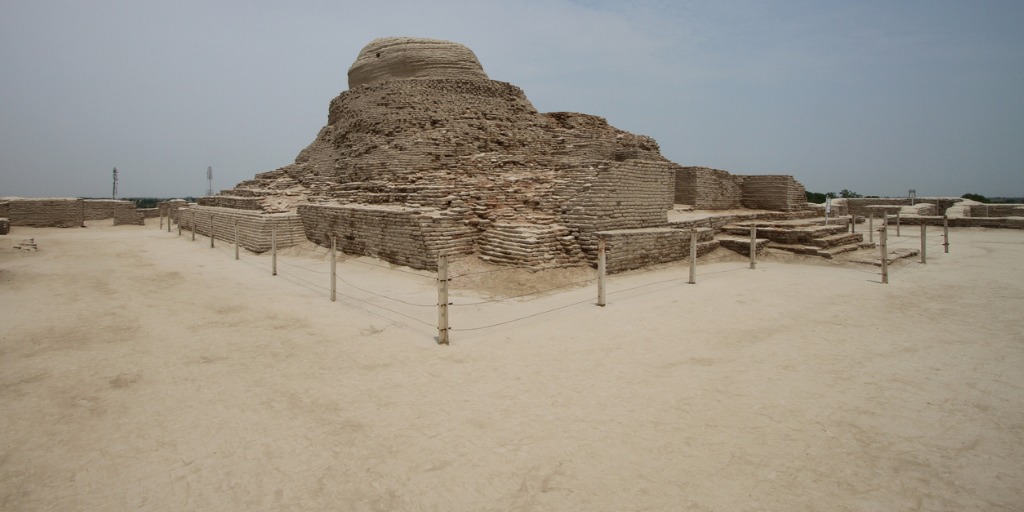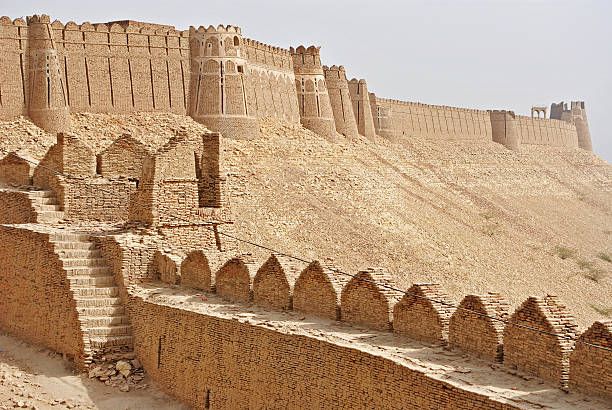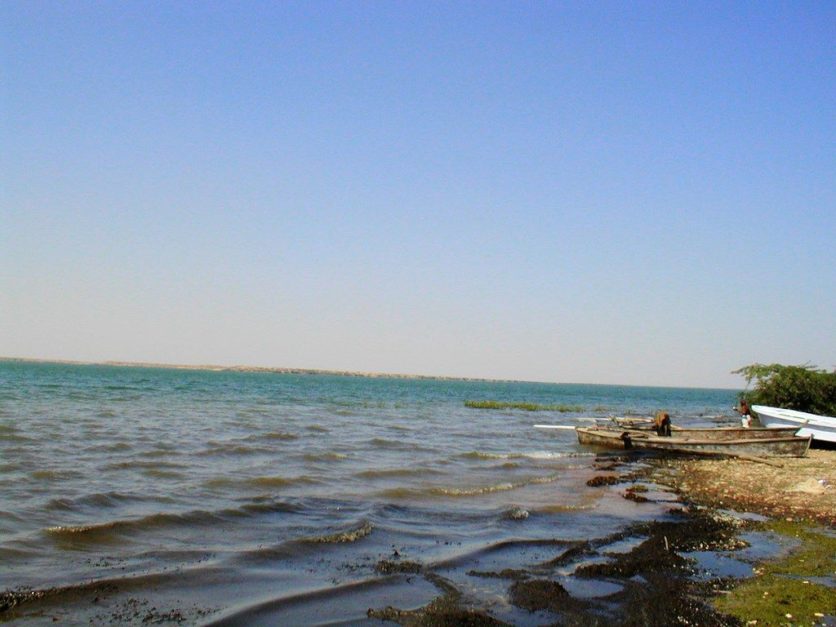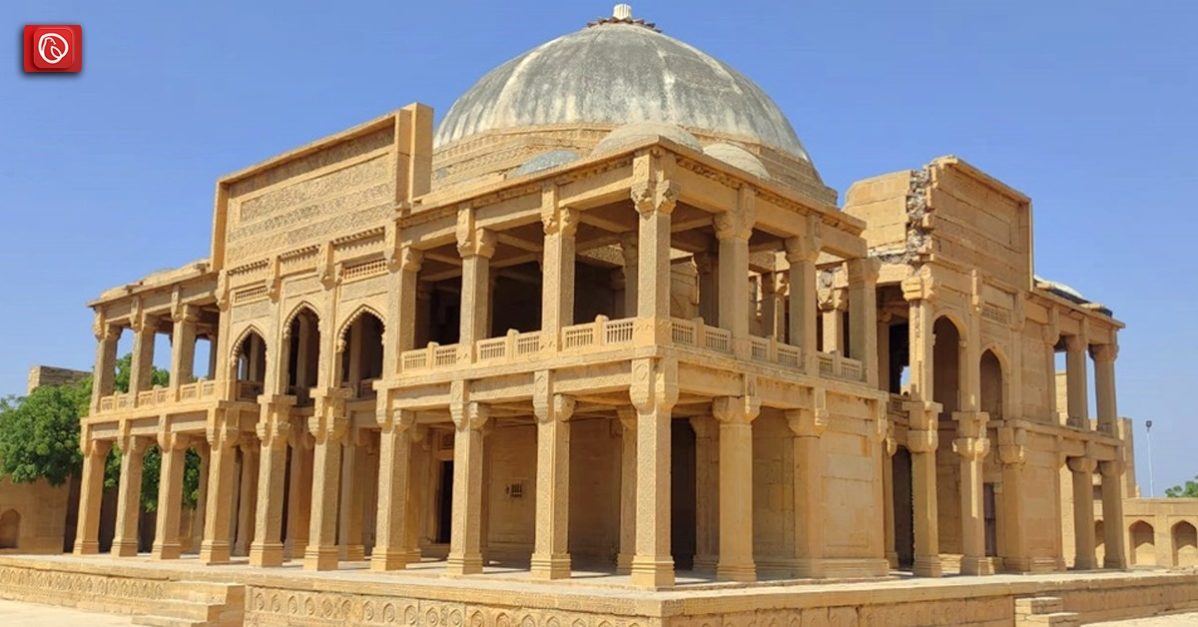Sindh is one of the four provinces of Pakistan and holds great importance in the country, both historically and economically. With its rich Sindh culture and heritage, it is known for its colourful and diverse traditions. The province is also home to numerous tourist attractions, including historical monuments, temples, and beautiful landscapes.
Furthermore, Sindh is a significant contributor to the local economy, particularly in agriculture, commerce, and industry. Graana.com gives a detailed overview of Sindh below, including its history, geography, culture, climate and more.
Brief History of Sindh
Located in the southeast region of the country, the history of Sindh dates back to the Indus Valley Civilisation, which was one of the earliest civilisations in the world and flourished along the Indus River around 2500 BCE.
Over the centuries, Sindh has been ruled by various dynasties and empires, including the Persian Empire, the Mauryan Empire, the Arab Caliphate, and the British Raj. It became a part of Pakistan in 1947, after the partition of the Indian subcontinent.
Geography and Climate of Sindh
Sindh is bordered by Balochistan to the west and northwest, Punjab to the northeast, and the Indian states of Gujarat and Rajasthan to the east. It has a varied topography, with the coastal plains in the south and east, the Kirthar Range in the west, and the fertile Indus River plain in the central and northern regions of the province.
The climate of Sindh is primarily hot and arid, with monsoon winds bringing seasonal rains during the summer months. The temperatures in the province can reach as high as 45°C during the summer, while the winter months are relatively mild with temperatures ranging between 15°C to 20°C.
Sindhi Culture
Sindh has a diverse heritage that has been shaped by the many civilisations and cultures that have lived in the region over the centuries. Some of the key aspects of the Sindh culture include:
Traditional Dress and Jewellery
Sindhi people have a distinctive style of dress, characterised by brightly coloured clothes and intricate jewellery. Women typically wear a traditional dress called the ‘ajrak’, which is a long piece of cloth decorated with intricate patterns, while men wear a similar style of dress called the ‘lungi’. Both men and women often wear traditional jewellery, including bangles, earrings, and necklaces.
Music and Dance
Music and dance play an important role in the heritage of Sindh culture. The province is famous for its traditional music, including Sufi music, as well as its folk music and dances, such as the Bhangra dance.
Festivals and Celebrations
Sindh hosts many local festivals, including the annual Urs (religious festival) of Sufi saints, and the Sindhi Cultural Day, which is celebrated on December 12th.
Cuisine
Some of the most famous dishes from Sindh include ‘biryani’ (spicy rice dish), ‘dal’ (lentil soup), and ‘Sindhi kadhi’ (spicy yoghurt dish).
Tourist Attractions in Sindh
Following are the most popular tourist attractions in Sindh:
- Mohenjo Daro
- Kot Diji Fort
- Keenjhar Lake
- Kirthar National Park
- Sukkur Barrage
- Ranikot Fort
Mohenjo Daro

Mohenjo Daro is a UNESCO World Heritage Site that dates back to the 26th century BC. This ancient city was part of the primary urban settlement of the Indus Valley Civilisation, also referred to as the Harappan Civilisation. ‘Mohenjo Daro’ is derived from the Sindhi language and means ‘Mound of the Dead.’
Numerous ancient artefacts have been discovered in Mohenjo Daro, including tools made from materials like stone and copper, sculptures, measuring devices such as balance scales and weights, jewellery etc.
The artefacts found in Mohenjo Daro can be viewed at a museum located approximately 800 metres from the site. It takes around an hour to fly from Karachi to Mohenjo Daro, but only smaller aircraft can land there due to limited infrastructure. A one-way ticket to or from Mohenjo Daro costs approximately PKR 6,000, though the price may vary depending on the airline.
Driving from Karachi to Mohenjo Daro takes approximately six hours. Another option is to take a train from Karachi to Dokri, a village located 7 kilometres from Mohenjo Daro.
Kot Diji Fort

The city of Khairpur is home to the Kot Diji Fort, a significant symbol of the Talpur dynasty in the region and one of the must-visit destinations in Sindh. It is one of the biggest forts in Pakistan. According to historical accounts, the fort was built about a century ago in a remote area of Sindh.
The Kot Diji Fort was constructed over a 10-year span from 1785 to 1795. It features three towers that stand approximately 50 feet tall and is considered to be one of Pakistan’s most impressive forts. The surrounding walls of the fort are about 30 feet in height.
The fort’s perimeter measures approximately 1.8 kilometres in length. It was built using a combination of limestone and kiln-baked bricks. In addition, the fort features a water reservoir for storing and using potable water, which is a scarce resource in the region.
The Kot Diji Fort also includes a prison, a courtroom, and separate quarters for troops. The only entrance to the fort is the Royal Gate, also referred to as the Shahi Darwaza. The wooden gate was reinforced with heavy iron spikes to keep out intruders.
Keenjhar Lake

Keenjhar Lake is a popular fishing spot near Karachi. The lake was stocked with 600,000 fish seeds over the course of a multi-phase project. In addition to fishing, other outdoor activities such as swimming, boating, and jet skiing can also be enjoyed here.
Kirthar National Park
Kirthar National Park was established in 1974 and is Pakistan’s second-largest wildlife reserve. Government data indicates that the park is home to some of the world’s rarest species of wildlife, including leopards, wolves, chinkara, gazelles, striped hyenas, wild sheep, and ibex.
The Kirthar National Park covers an area of approximately 3000 square kilometres and is divided into 3 animal sanctuaries: the Hub Dam Wildlife Sanctuary, the Mahal Kohistan Wildlife Sanctuary, and the Kirthar National Park itself. Additionally, the park comprises at least four game reserves: Eri, Surjan, Hothiano, and Sumbak.
It also has two designated tourist centres, Khar and Karchat, where visitors can spend the night. The Sindh Wildlife Department is responsible for overseeing the national park, including monitoring wildlife, maintaining the park, managing tourism operations in the region, and issuing special permits.
Sukkur Barrage
Previously referred to as the Lloyd Barrage, Sukkur Barrage was constructed during British rule in the early 1900s. Its importance lies in its role in distributing water for agriculture as the region experiences low annual rainfall.
The Sukkur Barrage has seven canals flowing through it, including the Nara Canal, Mirwah Canal, Rohri Canal, Abul Wah Canal, Dadu Canal, Rice Canal, and Kirthar Canal.
Ranikot Fort
Ranikot Fort is situated in a remote region of Jamshoro District in Sindh and is considered a top tourist destination in the area. It is referred to as ‘The Great Wall of Sindh’ and still stands tall today. With a perimeter of approximately 32 kilometres, it is believed to be the largest fort in the world.
Upon approaching the fort from the south, visitors are greeted by a double-door gate. Upon entering, one can observe intricate carvings and floral designs on the decorative ornaments. The fort’s architecture is made entirely of stone and lime, showcasing a magnificent design and structure.
For those travelling from Karachi, the most convenient route to reach the fort is via National Highway 5. After leaving the city, one must head towards Dadu via the Indus Highway. A small town called San is located along the way and is just an hour away from Ranikot Fort.
The road to the fort is not well-constructed and the journey can be challenging. However, it can still be completed in 30 to 40 minutes. Once you reach the town of Meeri, which is a few kilometres away from the fort, you’ll need to park your vehicle and walk a short distance to the eastern flank of the fort.
From there, you can climb the boundary walls of the fort to reach the top and enjoy the panoramic view. If you’re planning to stay overnight, there’s a newly constructed guest house managed by the Sindh Tourism Development Corporation (STDC).
For more informative guides like umarkot sindh, visit the Graana blog.
FAQ
What is Sindh famous for?
Sindh, a province in southeastern Pakistan, is renowned for its rich cultural heritage and historical significance. The region is famous for its archaeological site, Mohenjo-daro, which is considered one of the most well-preserved remnants of the ancient Indus Valley Civilization.
Mohenjo-daro provides valuable insights into the advanced urban planning and craftsmanship of the civilization that thrived thousands of years ago. Moreover, Sindh boasts the captivating Thar Desert, also known as the Great Indian Desert, which stretches across parts of Sindh and Rajasthan, India. The Thar Desert offers mesmerizing landscapes, majestic sand dunes, and a vibrant cultural tapestry, attracting tourists from around the world.
What is the old name of Sindh?
The old name of Sindh, an Indian province in present-day Pakistan, is “Sindhu.”
What religion is Sindh region?
The majority religion in the Sindh region is Islam.
Who named Sindh?
The exact origin of the name “Sindh” is not attributed to a specific individual. The name is believed to have originated from the Sanskrit word “Sindhu,” which means river or ocean. Over time, as languages and cultures evolved, the name transformed into “Sindh” and became associated with the region. It is important to note that the name Sindh predates recorded history, and its usage evolved naturally over time.
Read More




